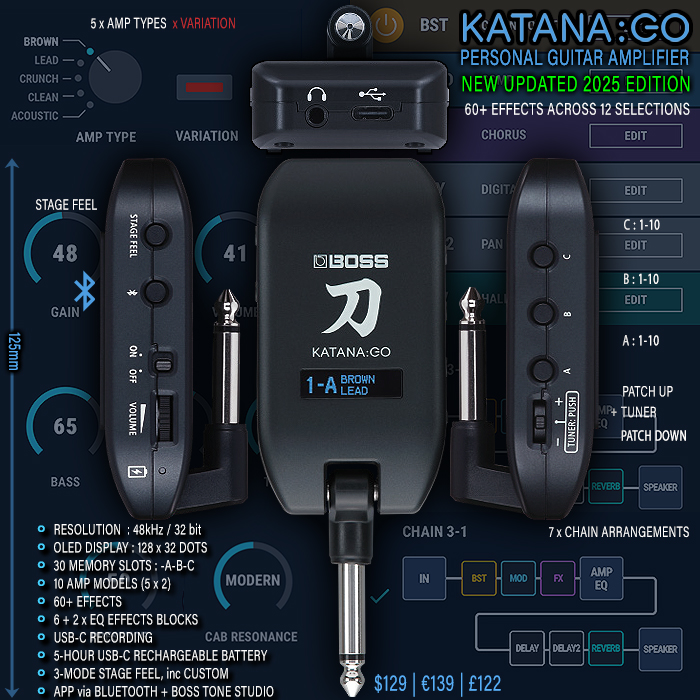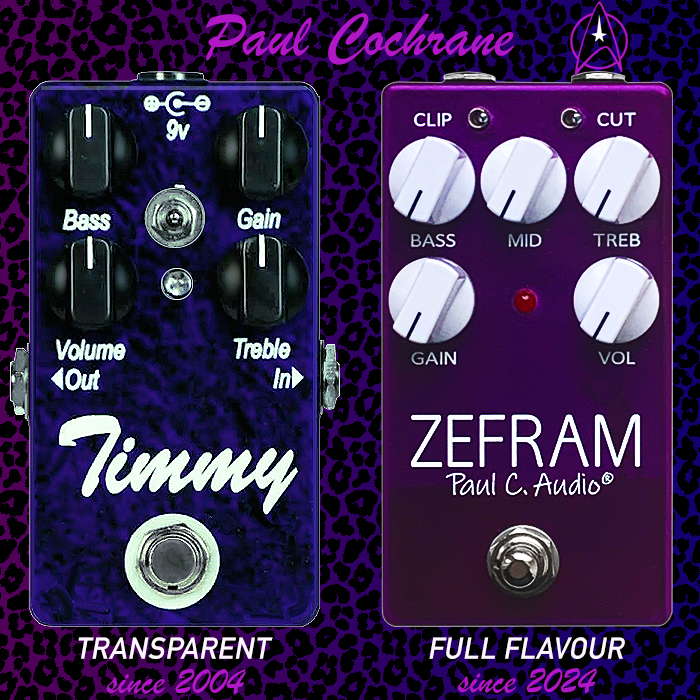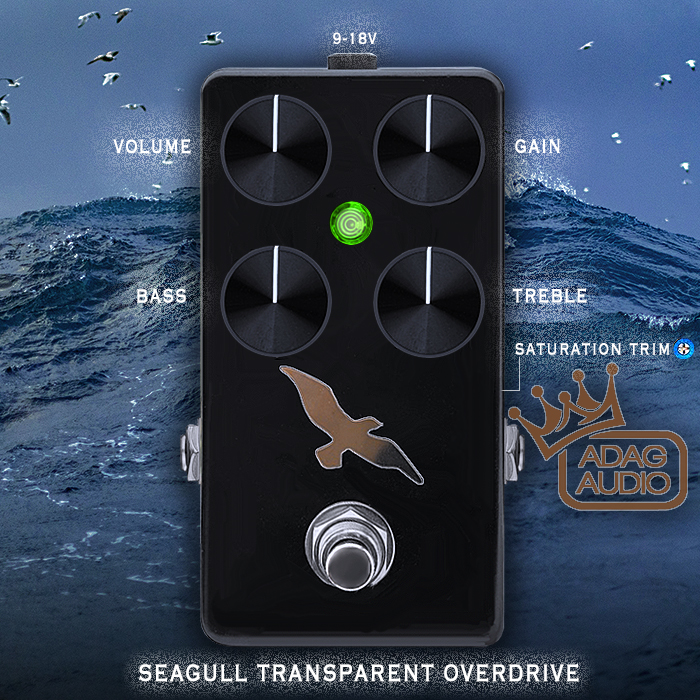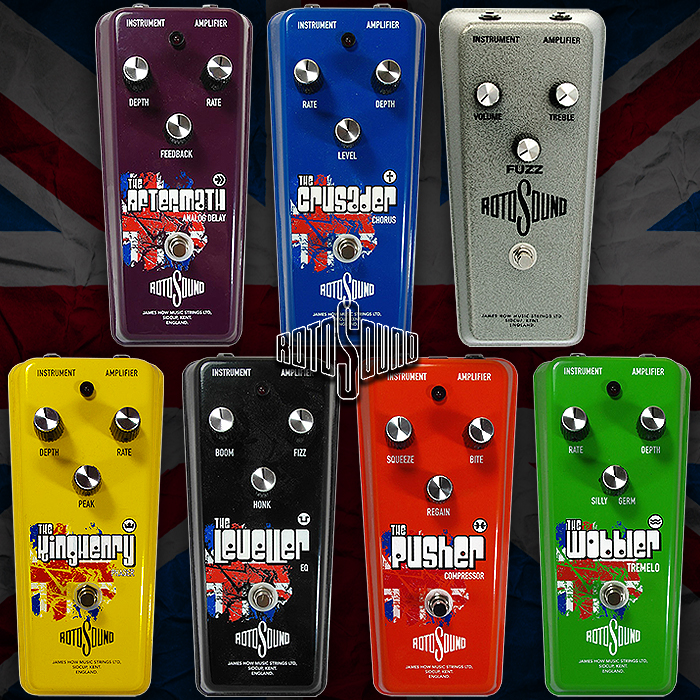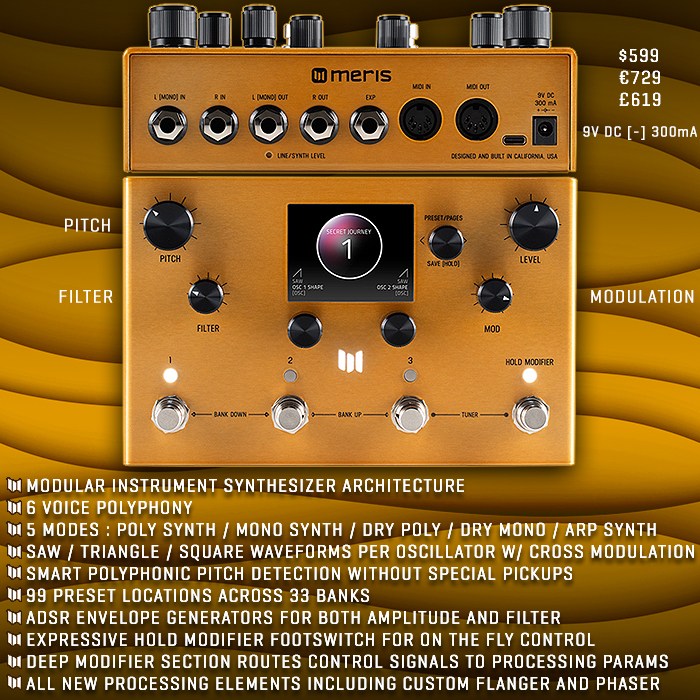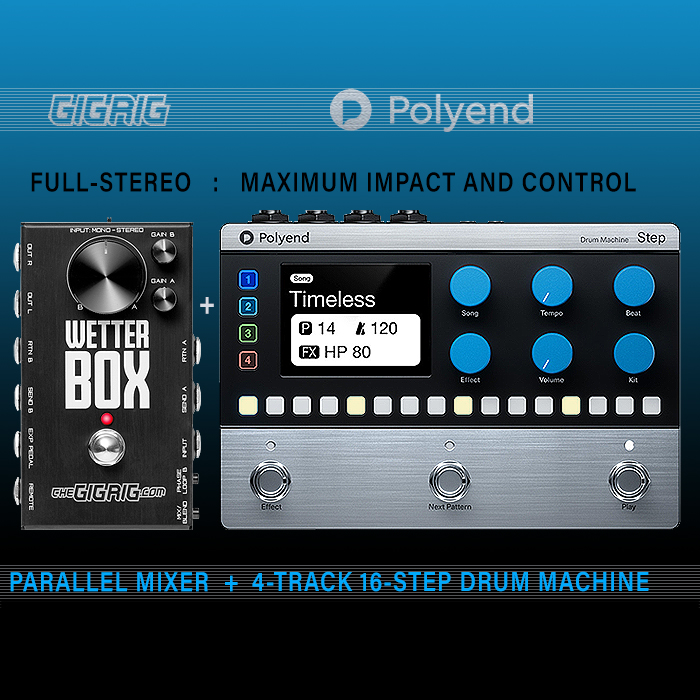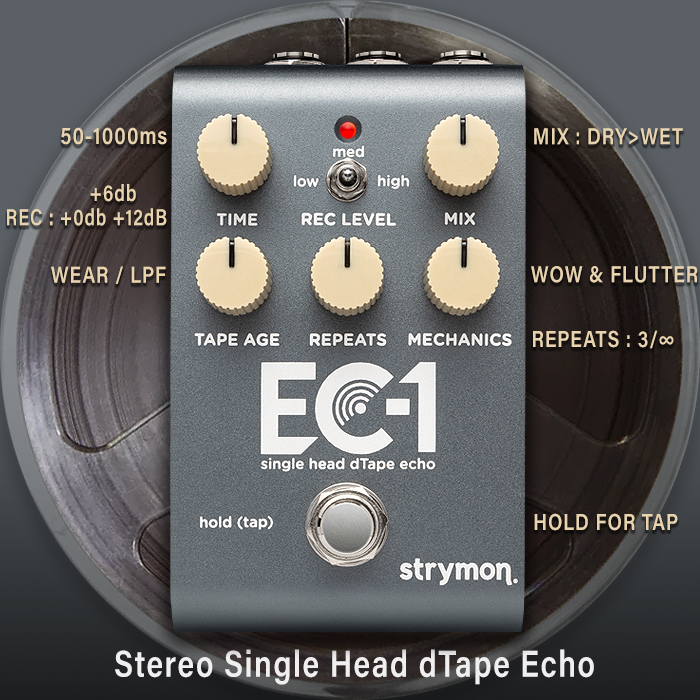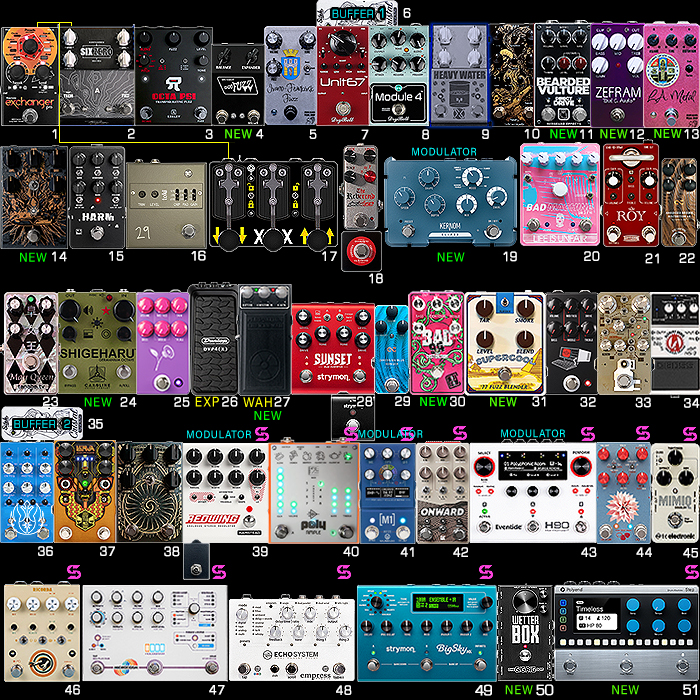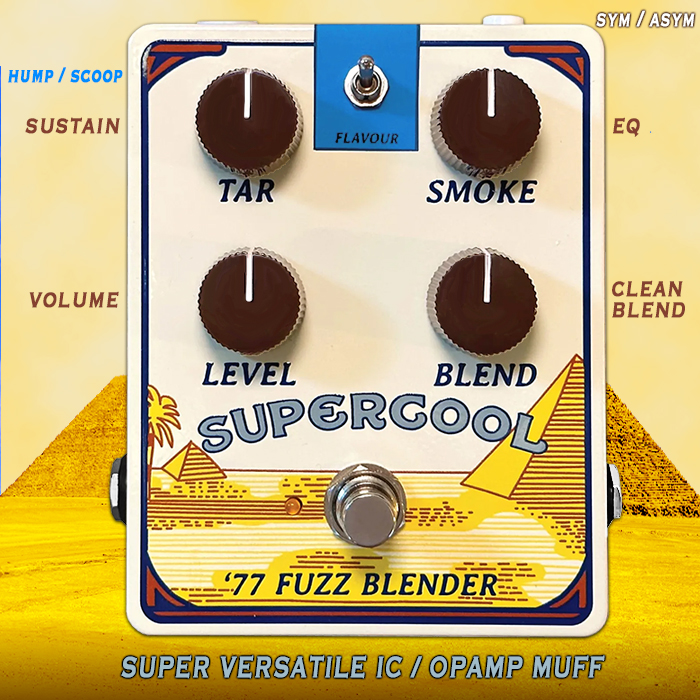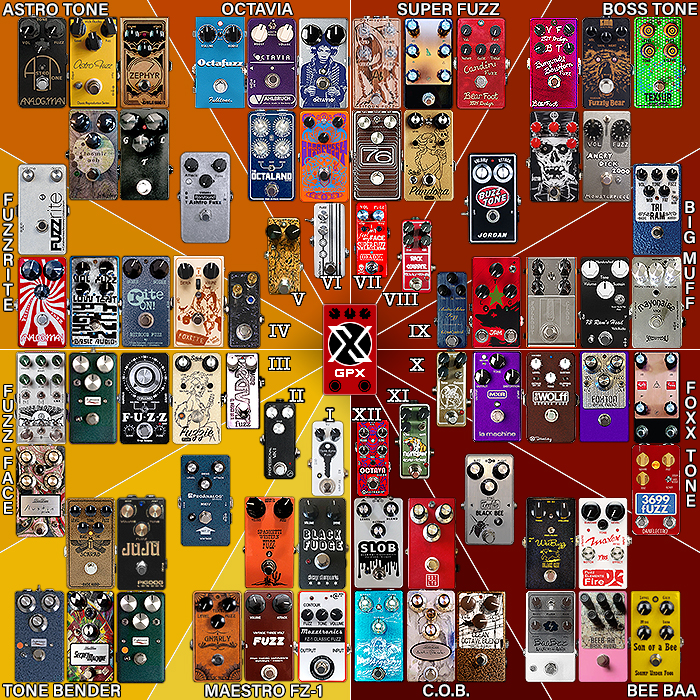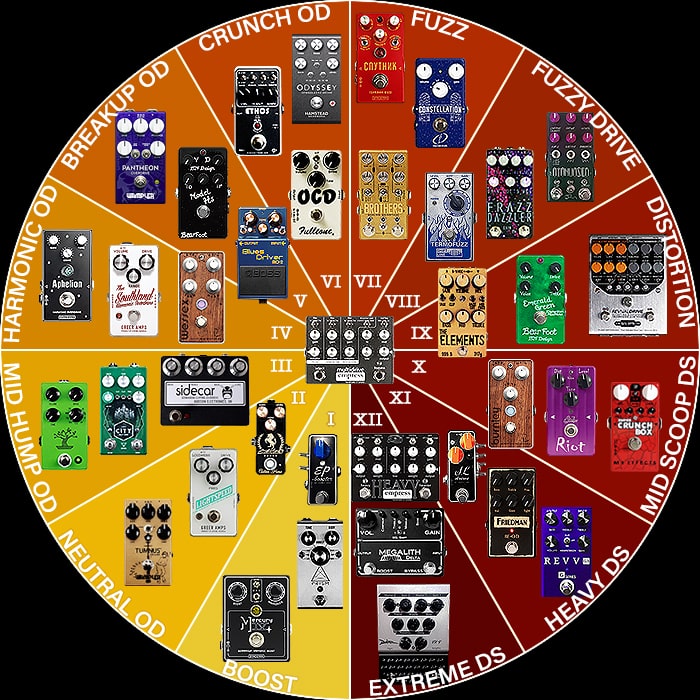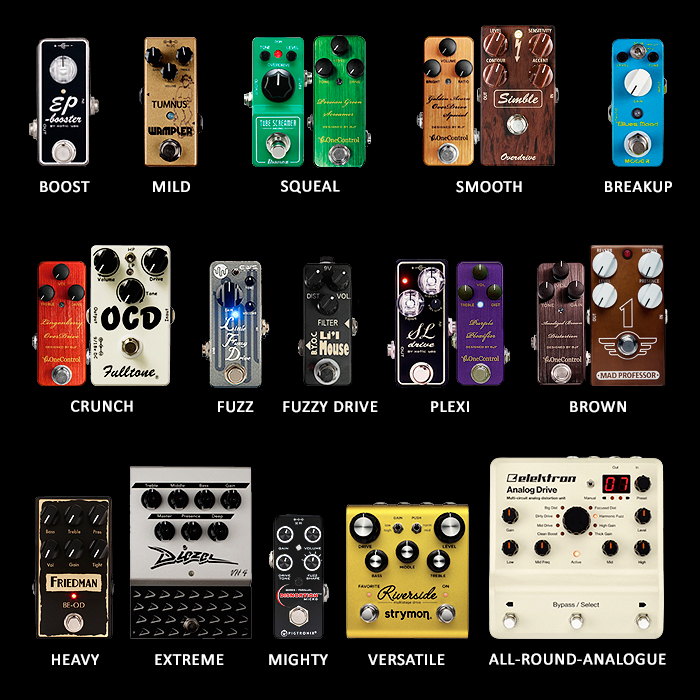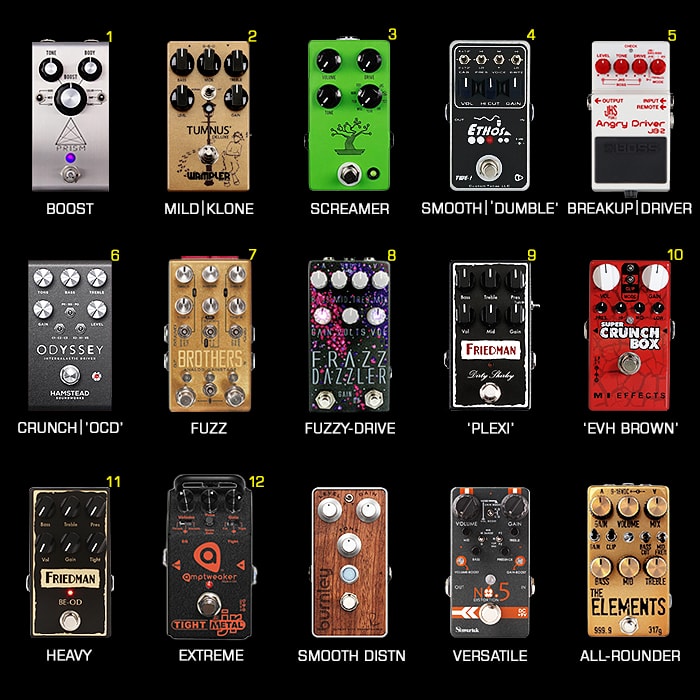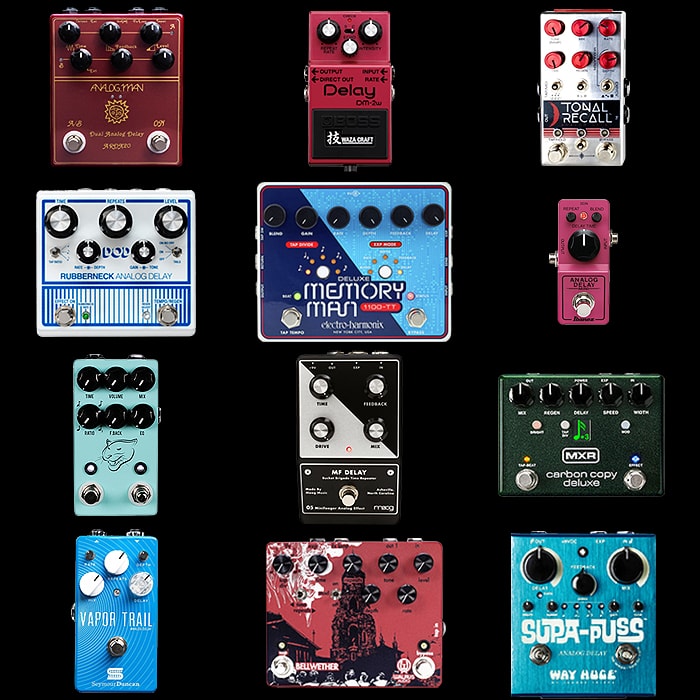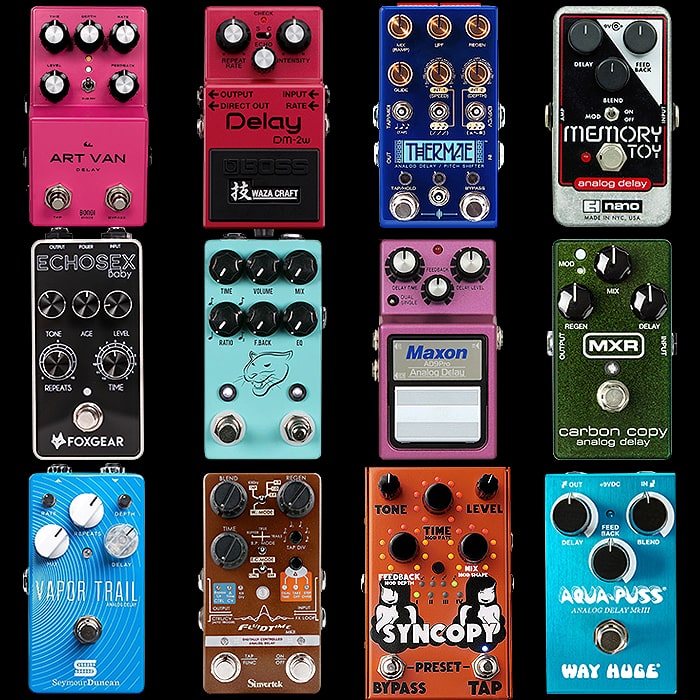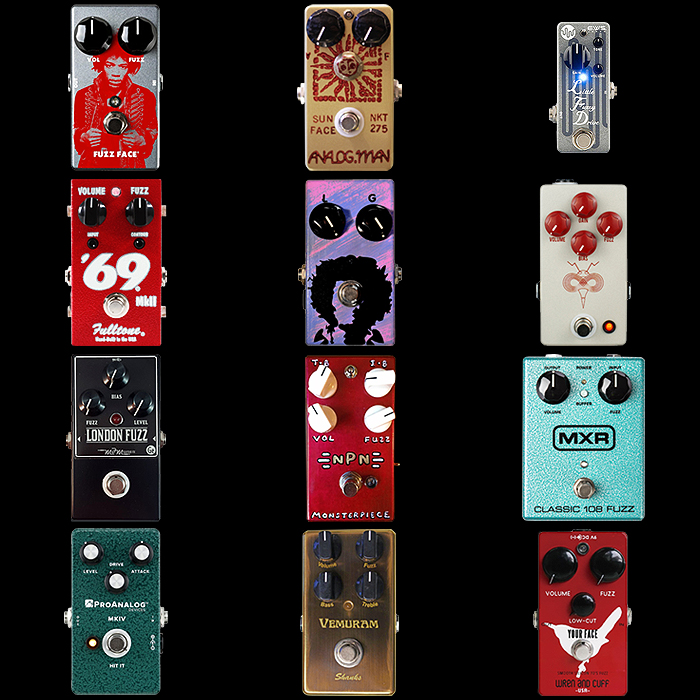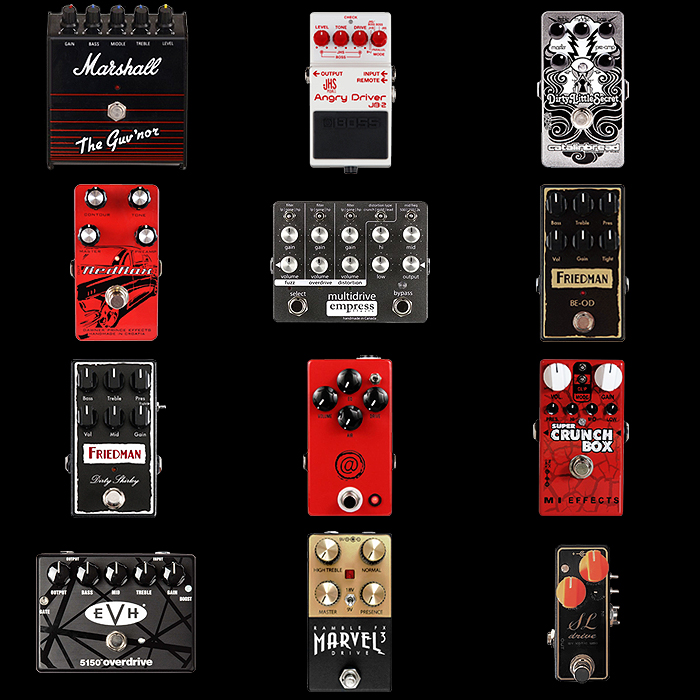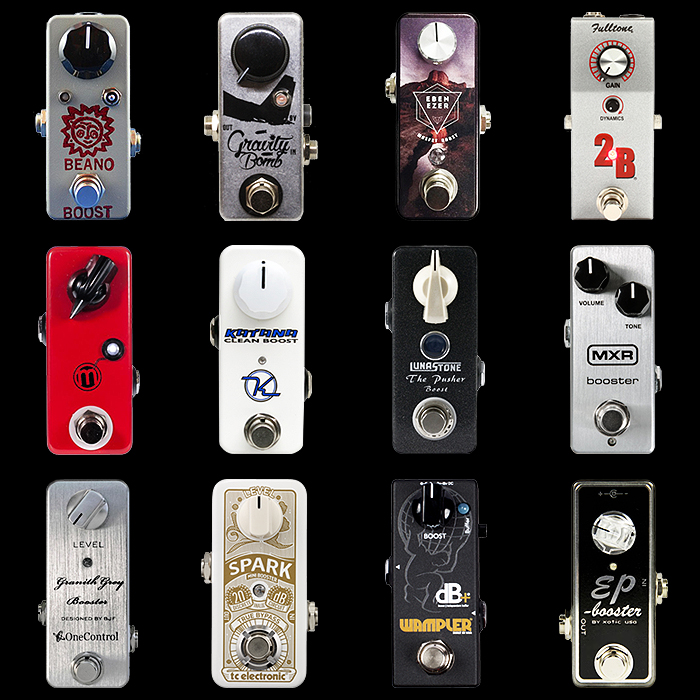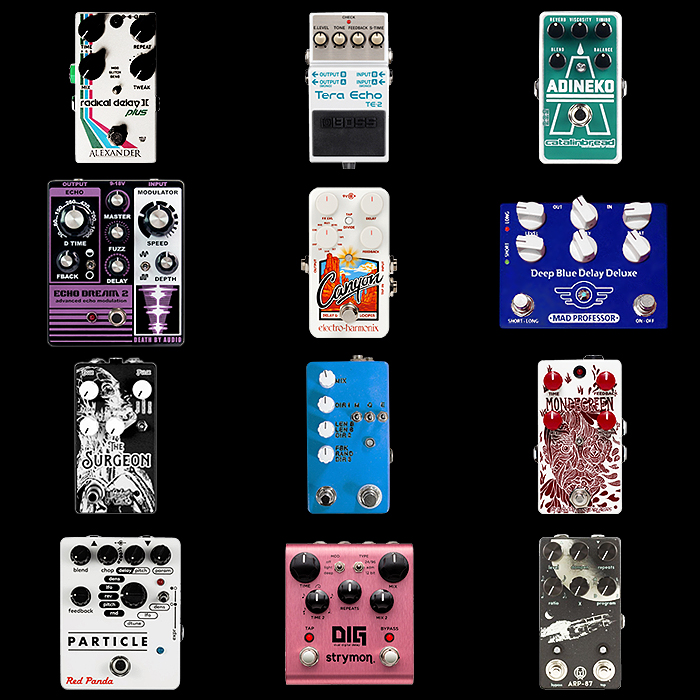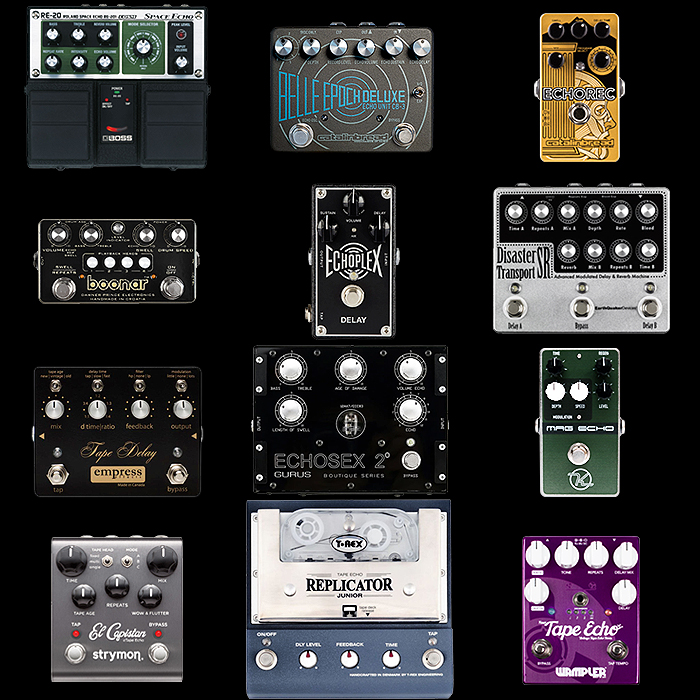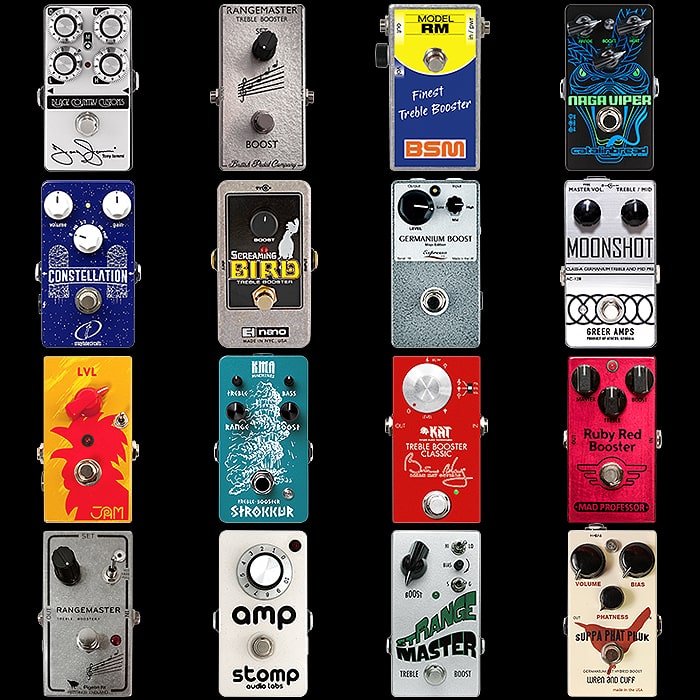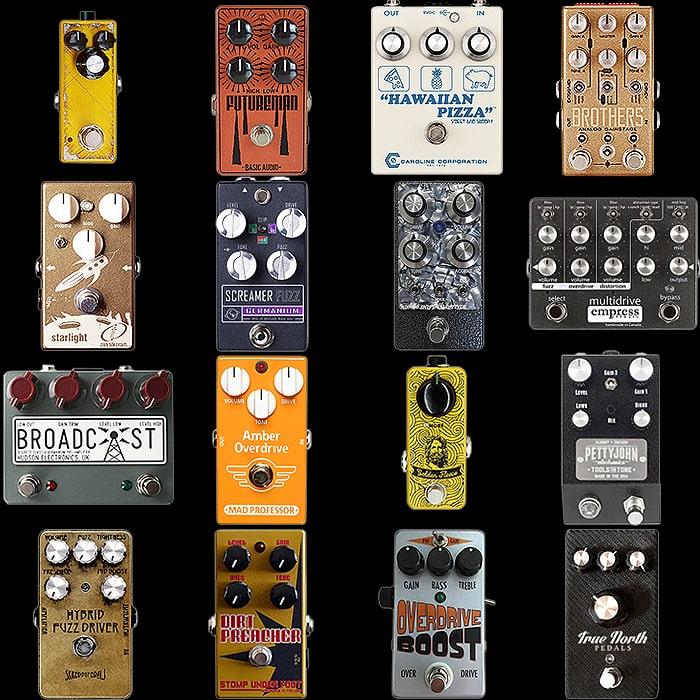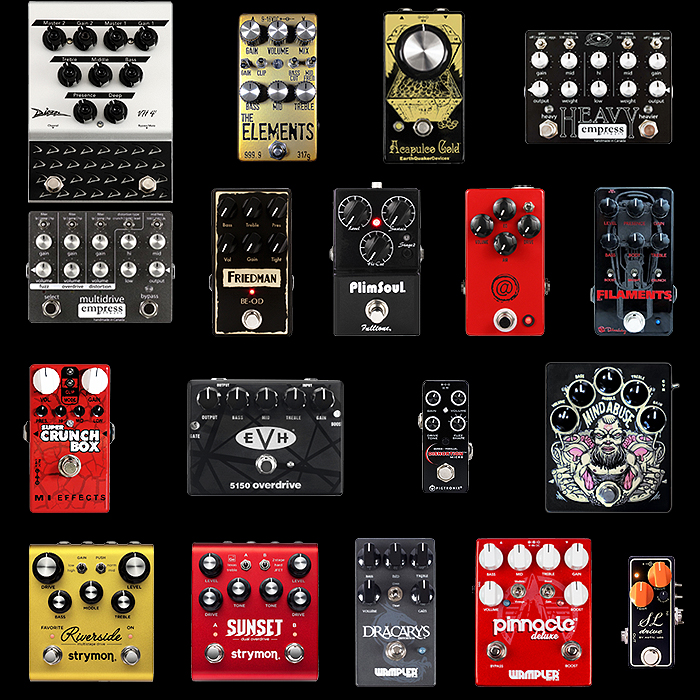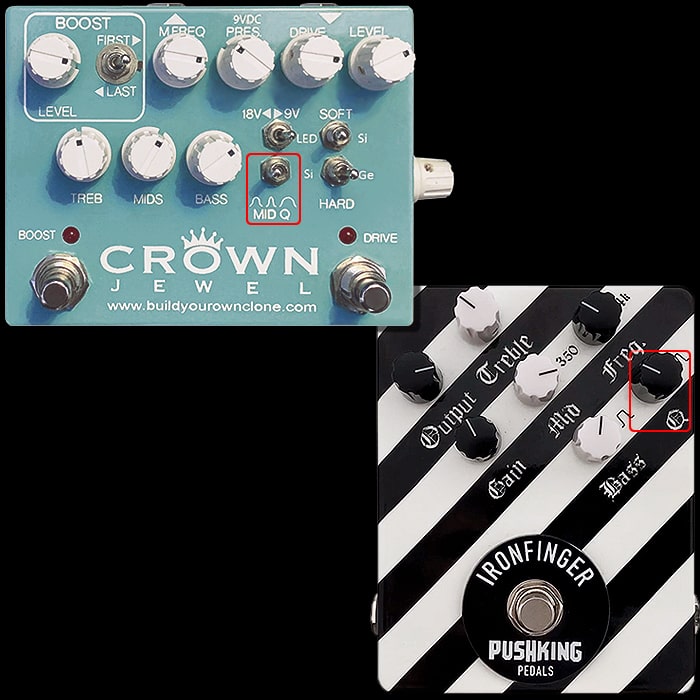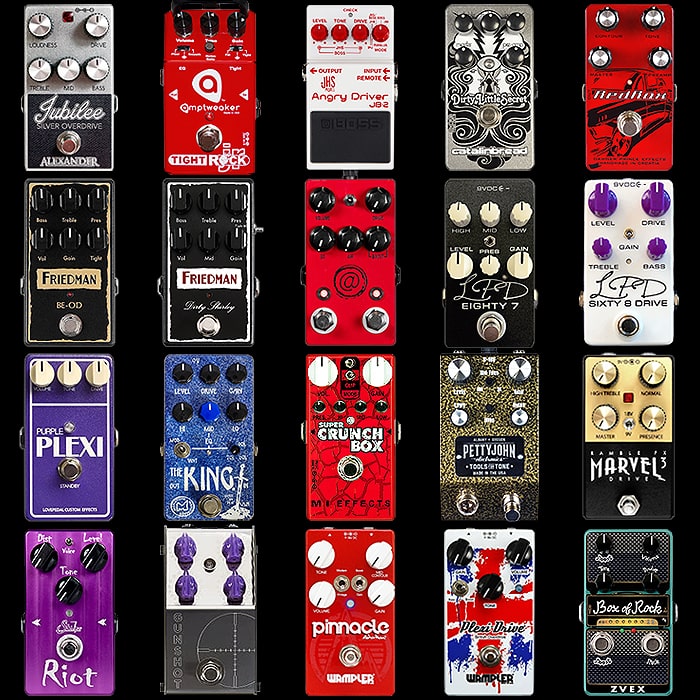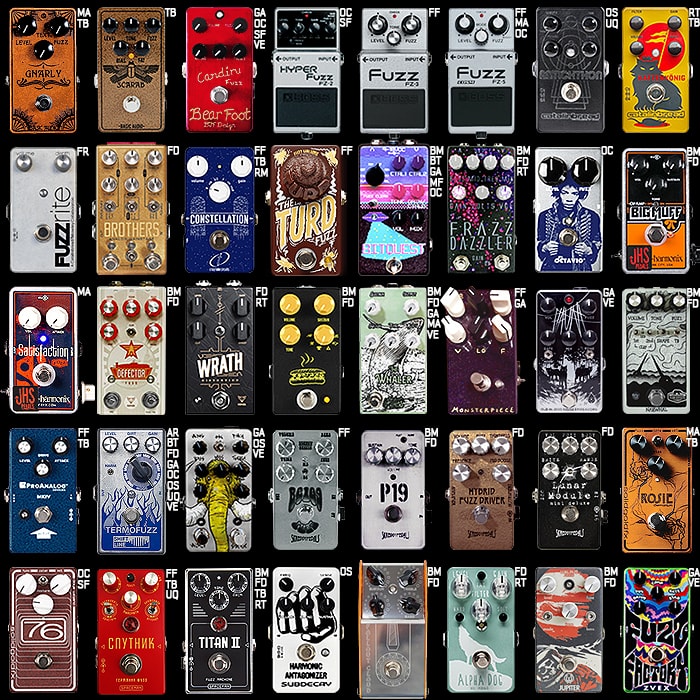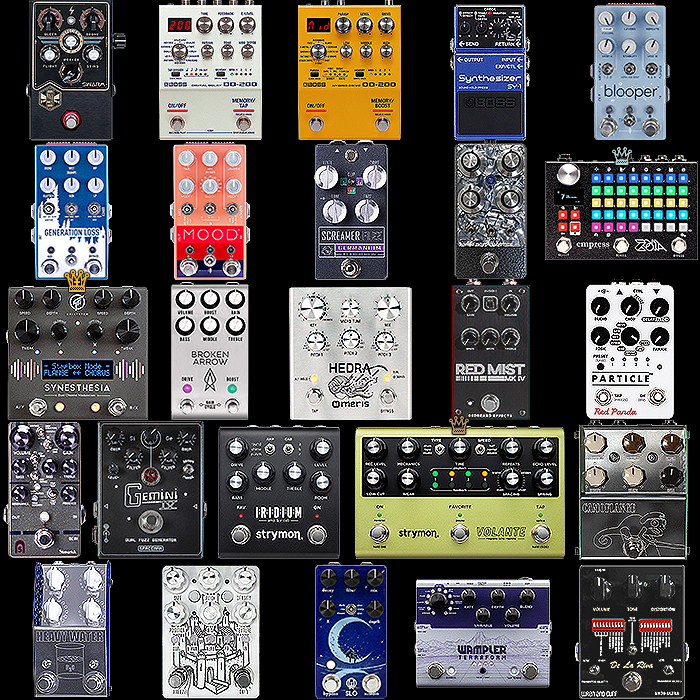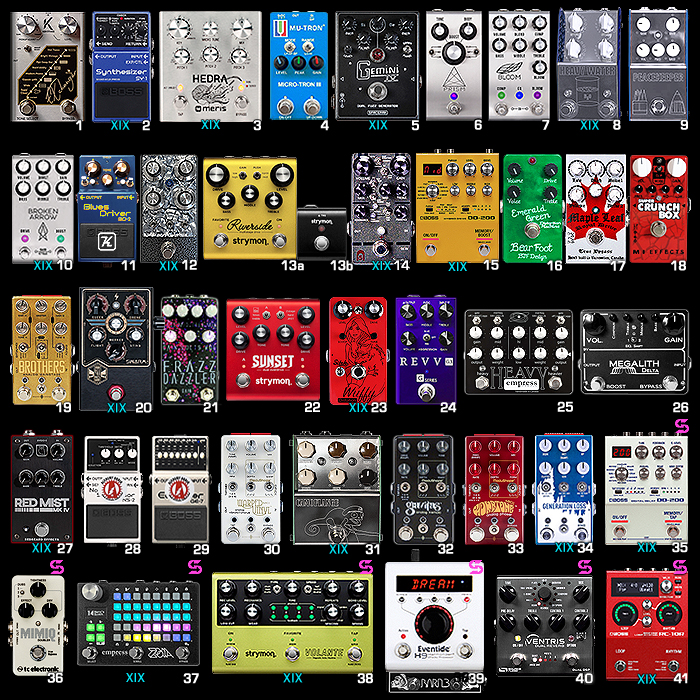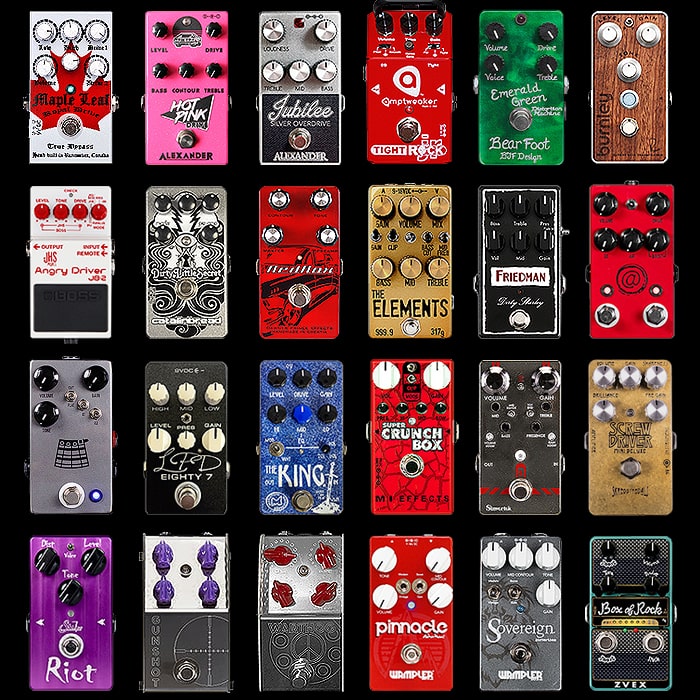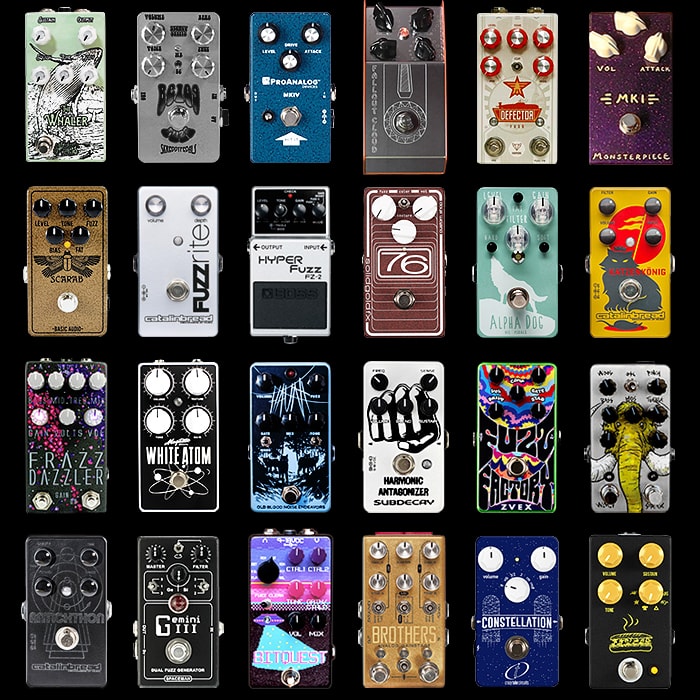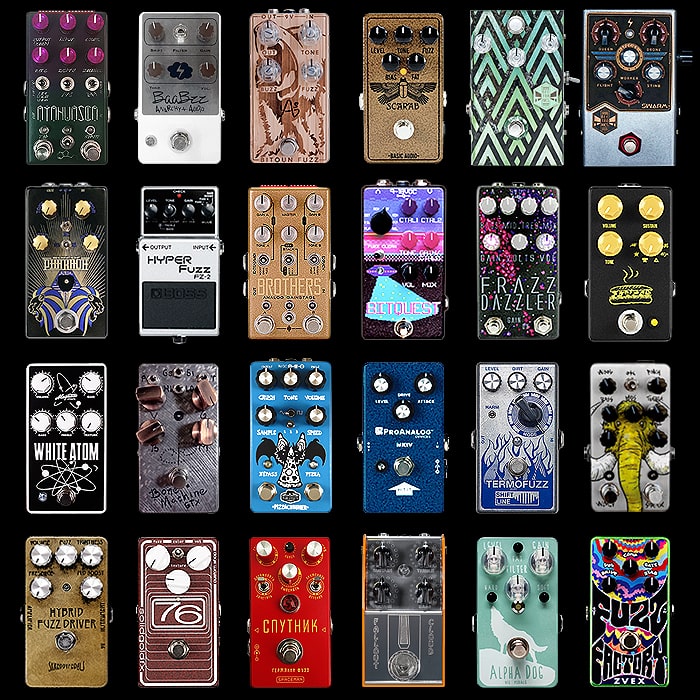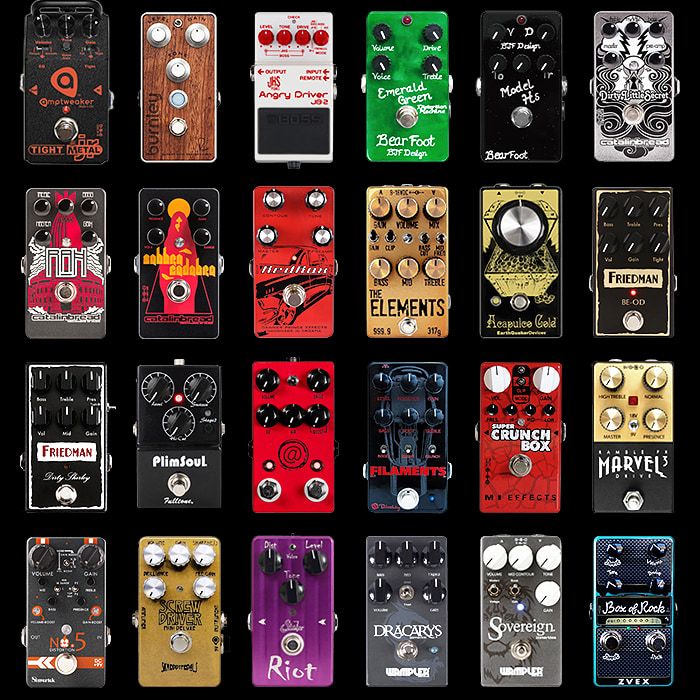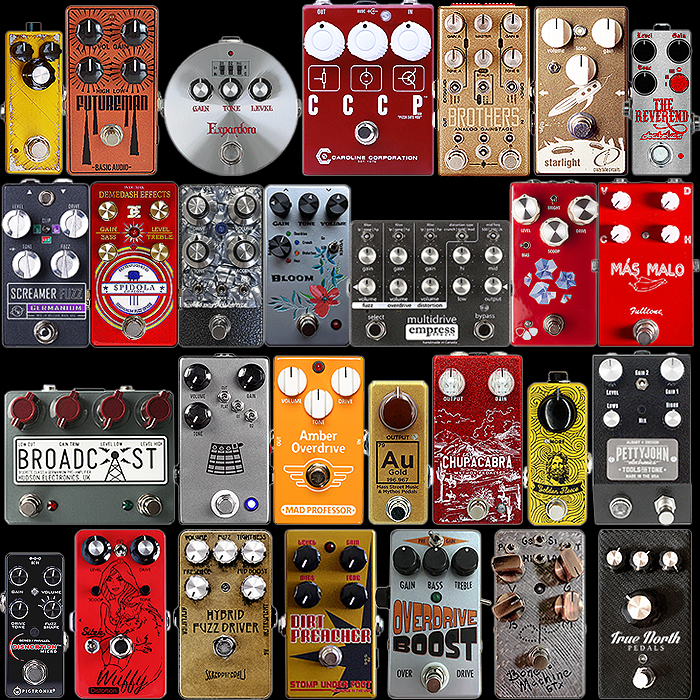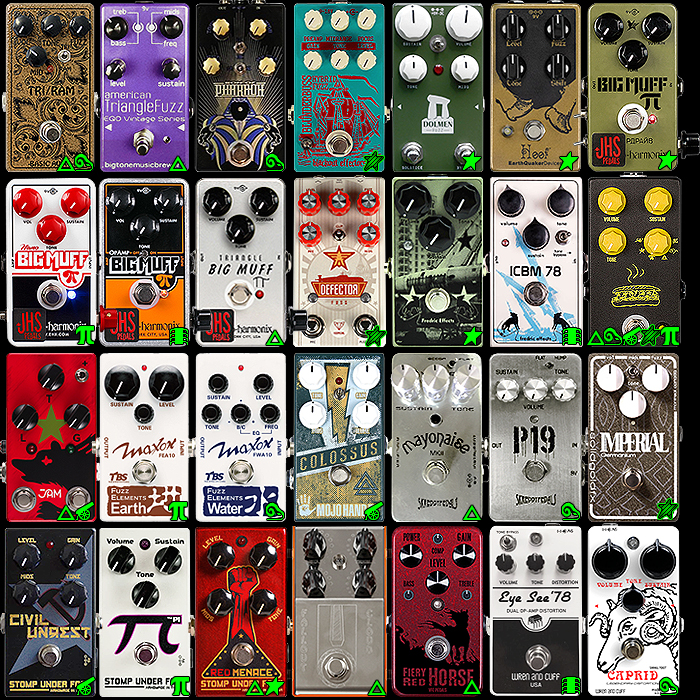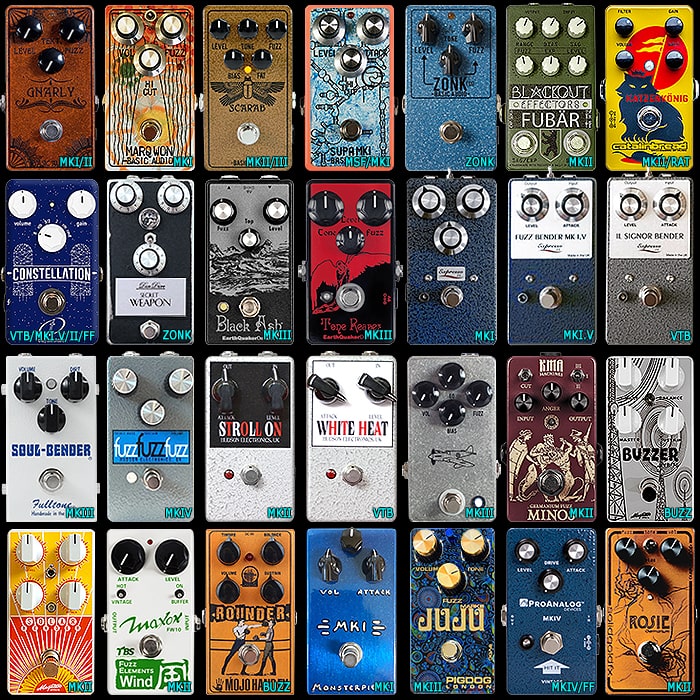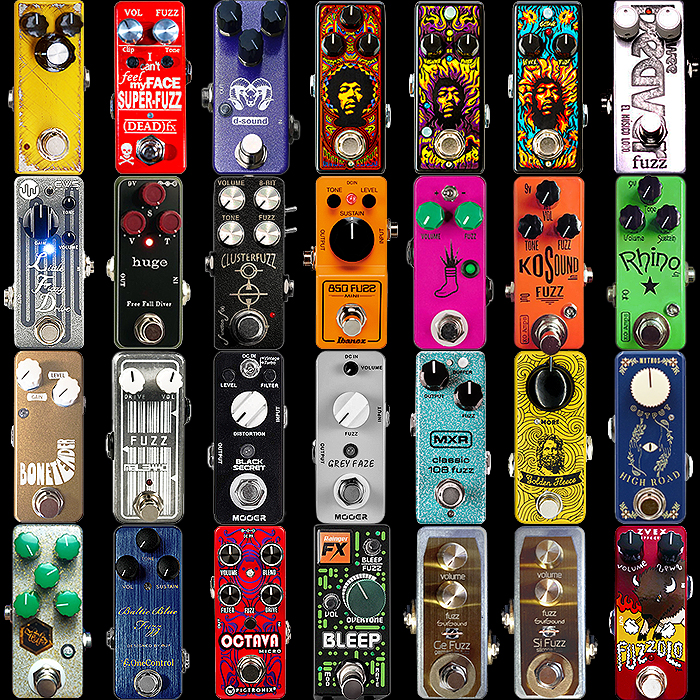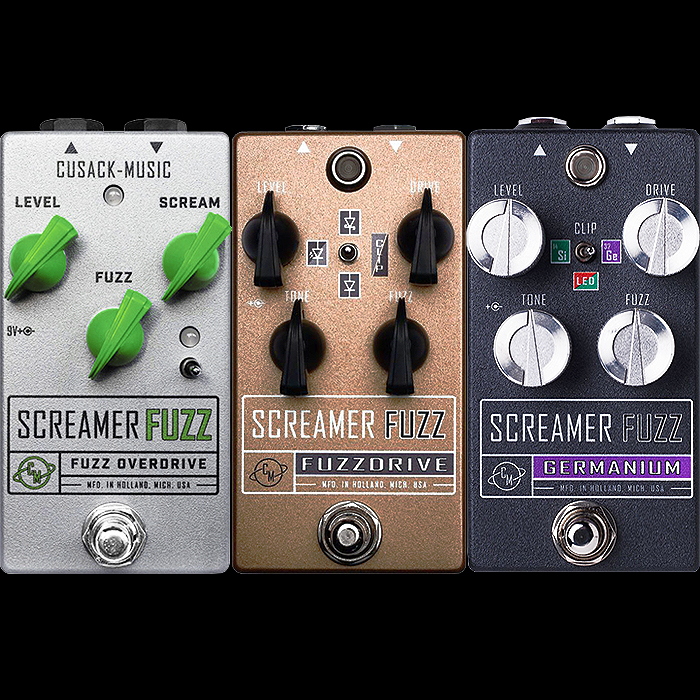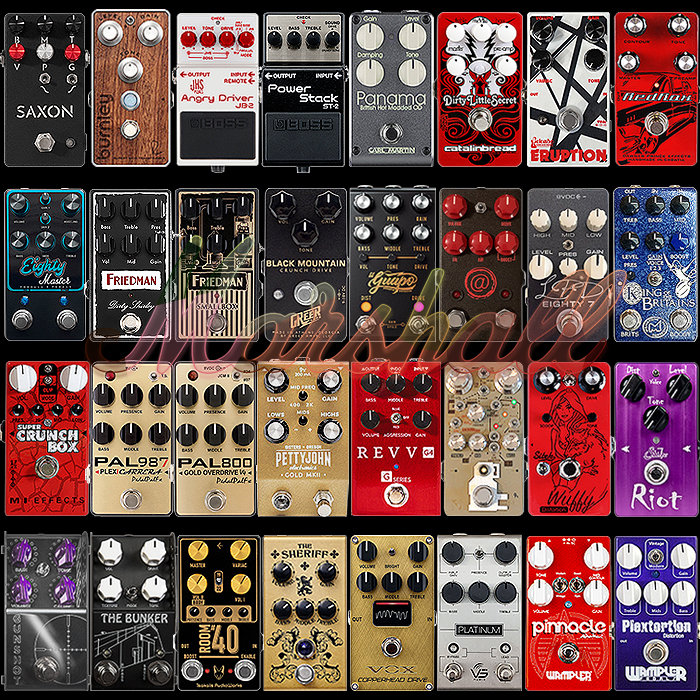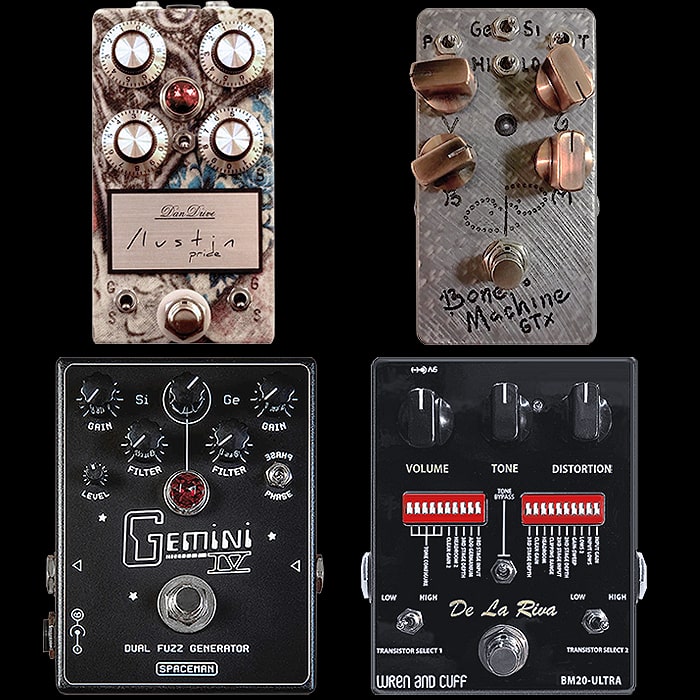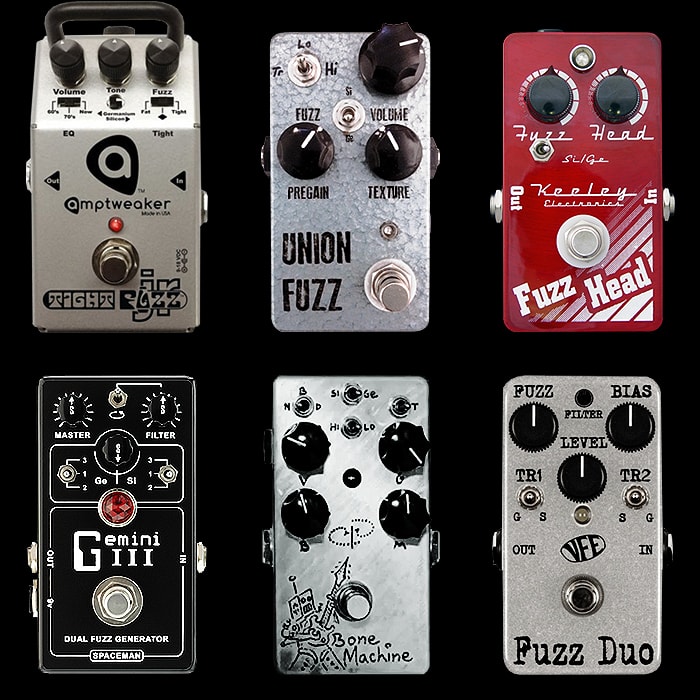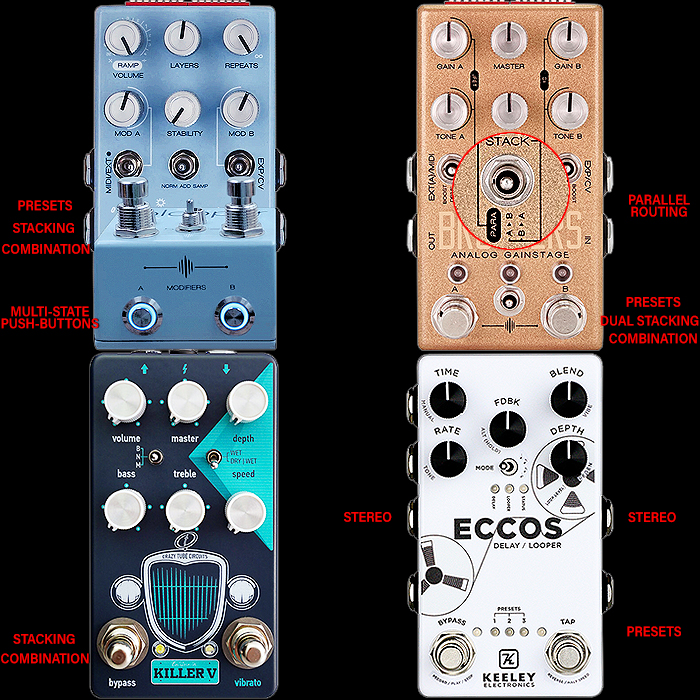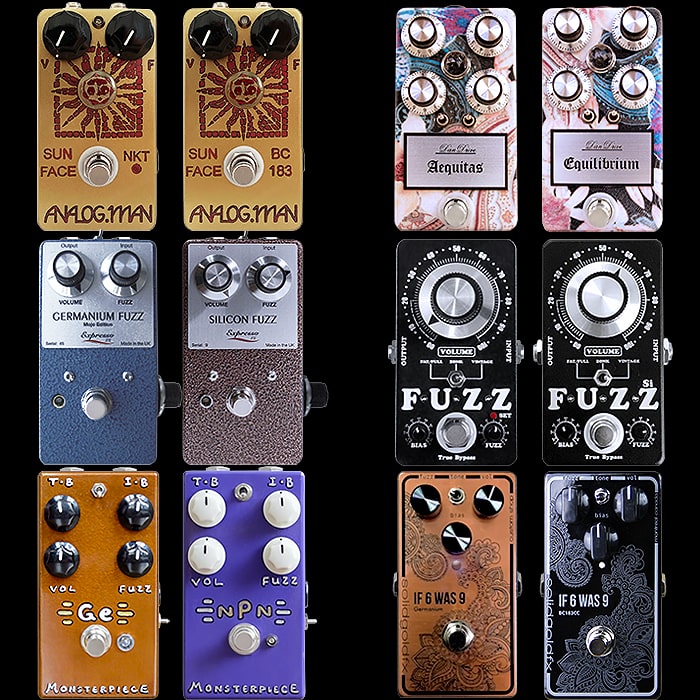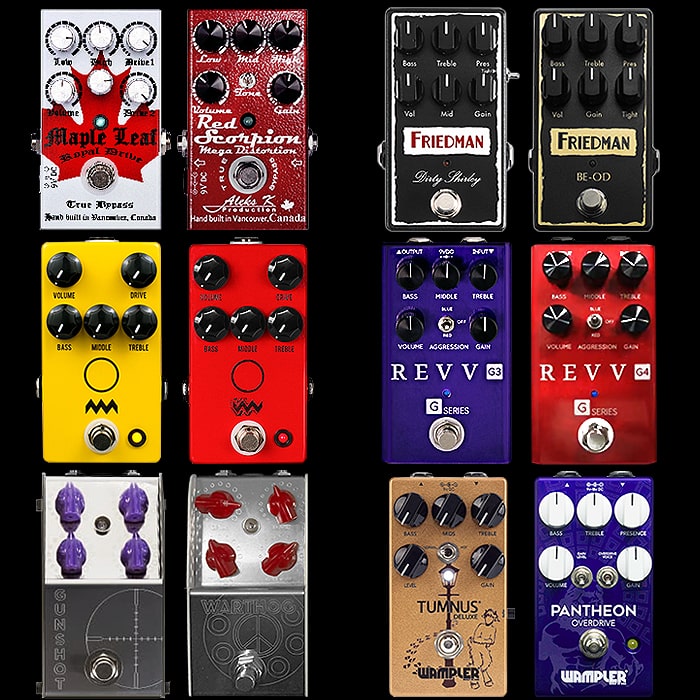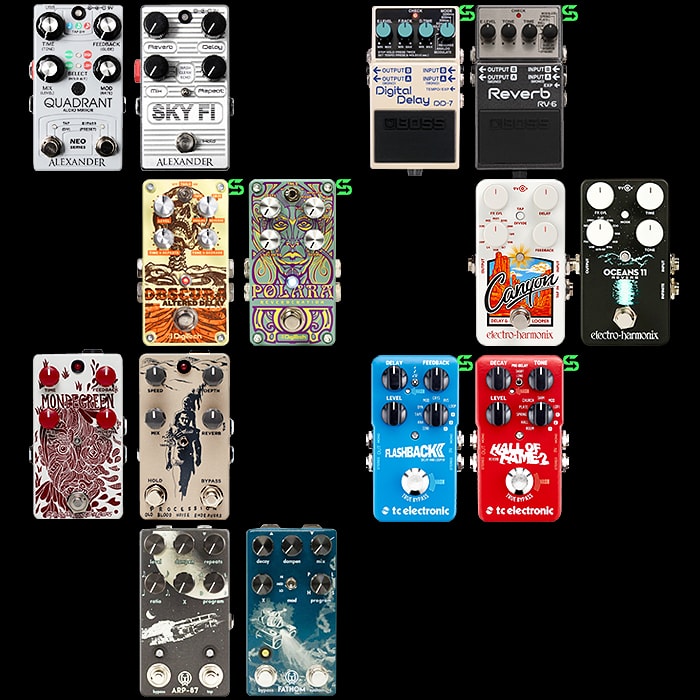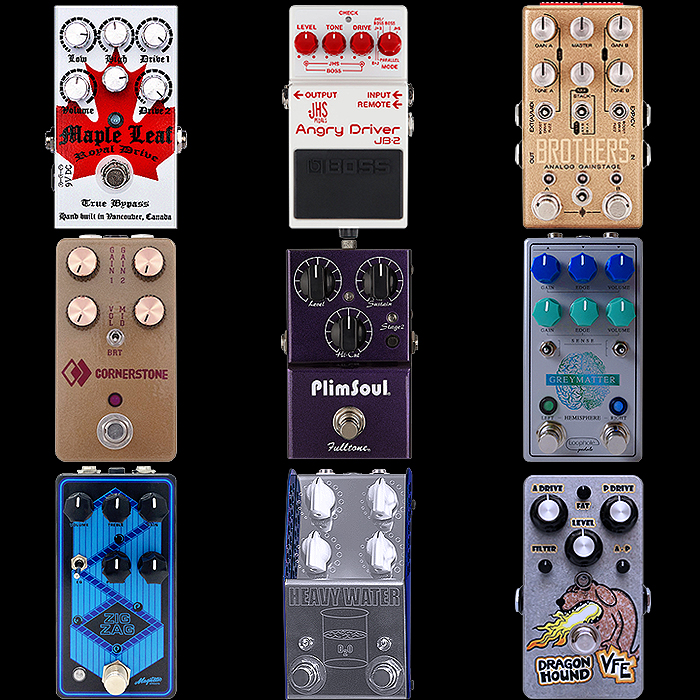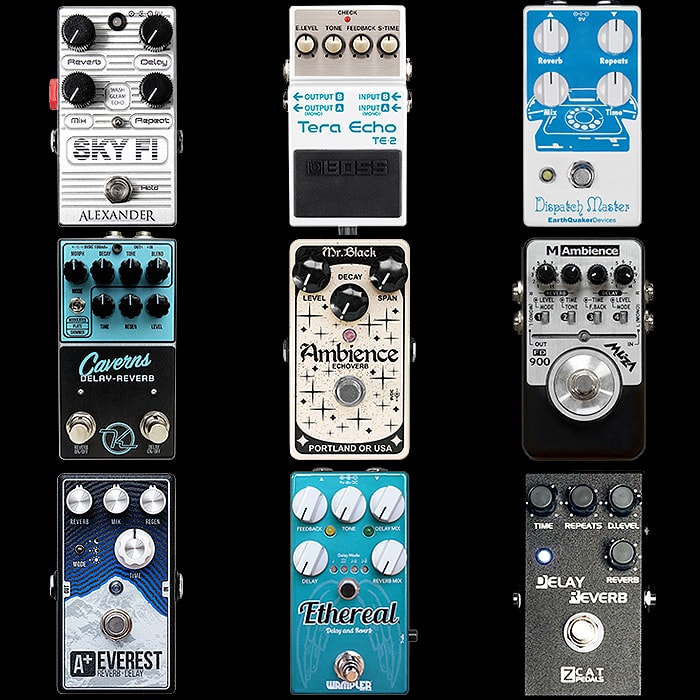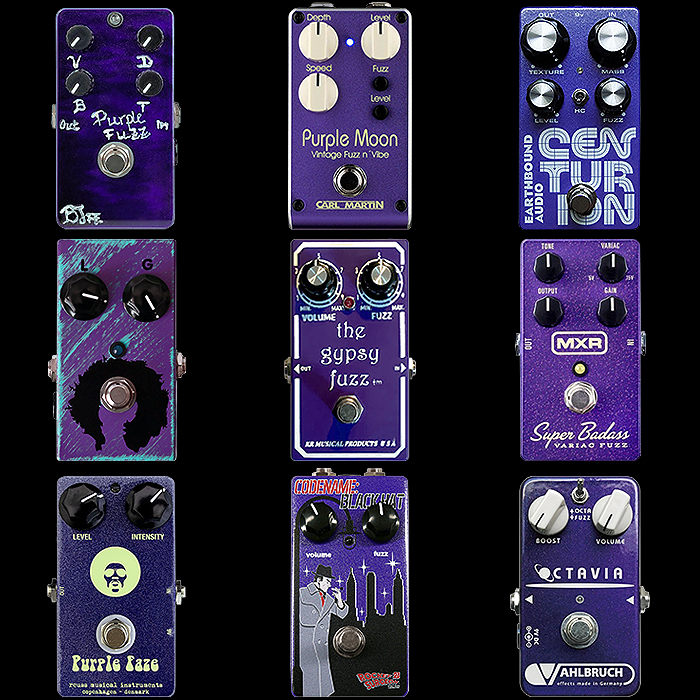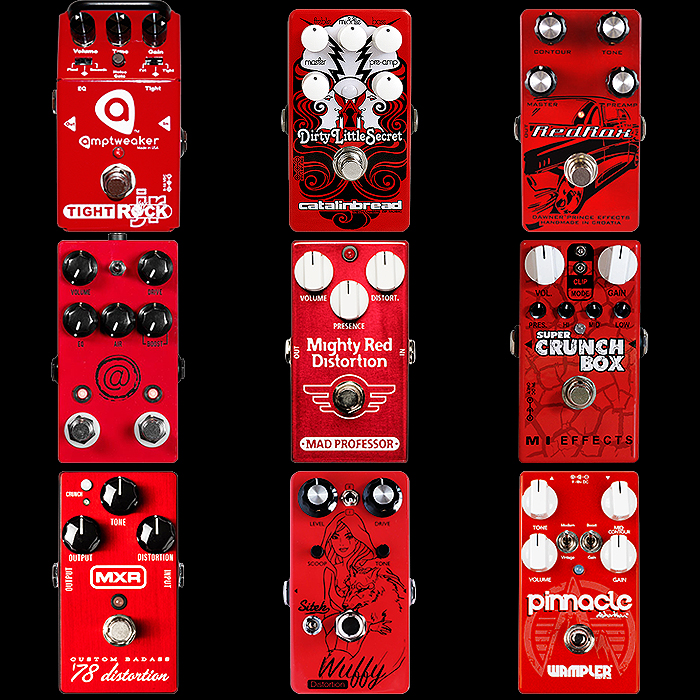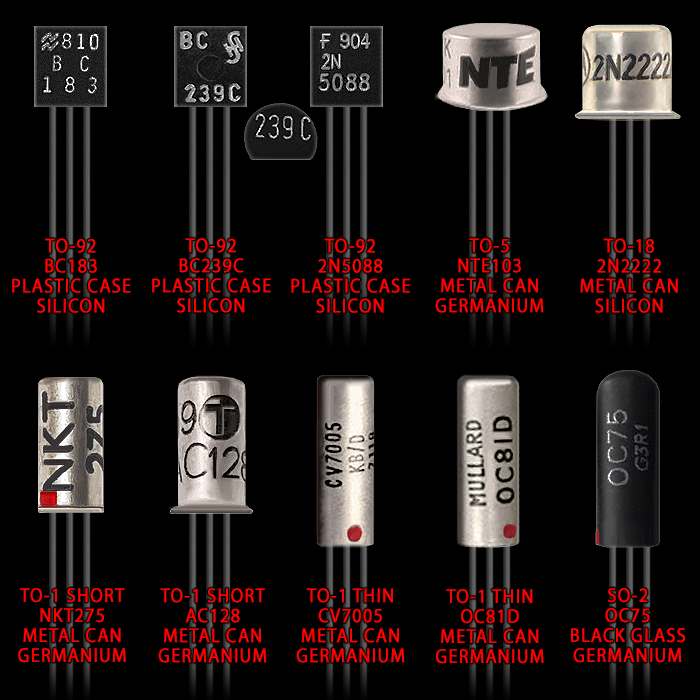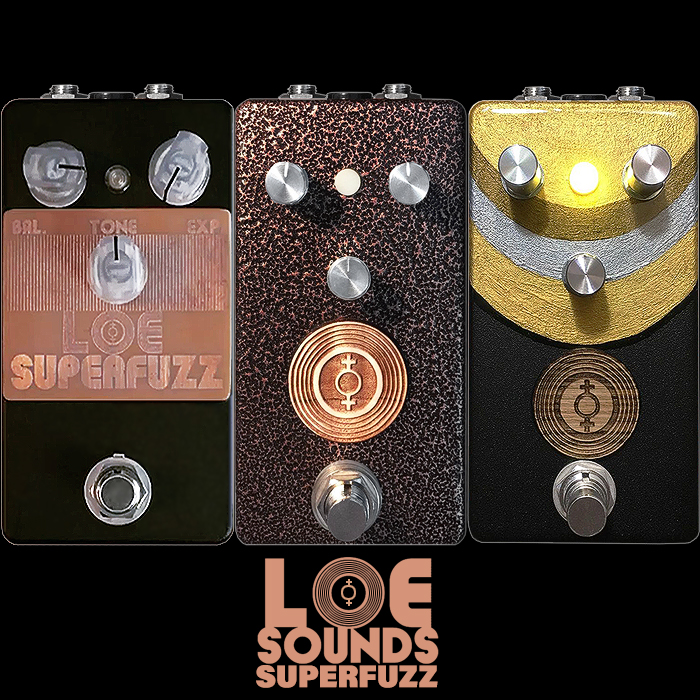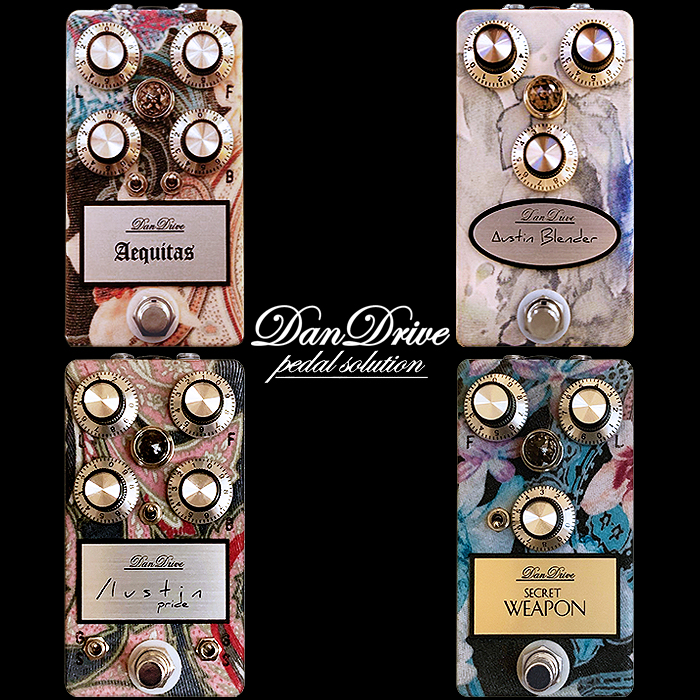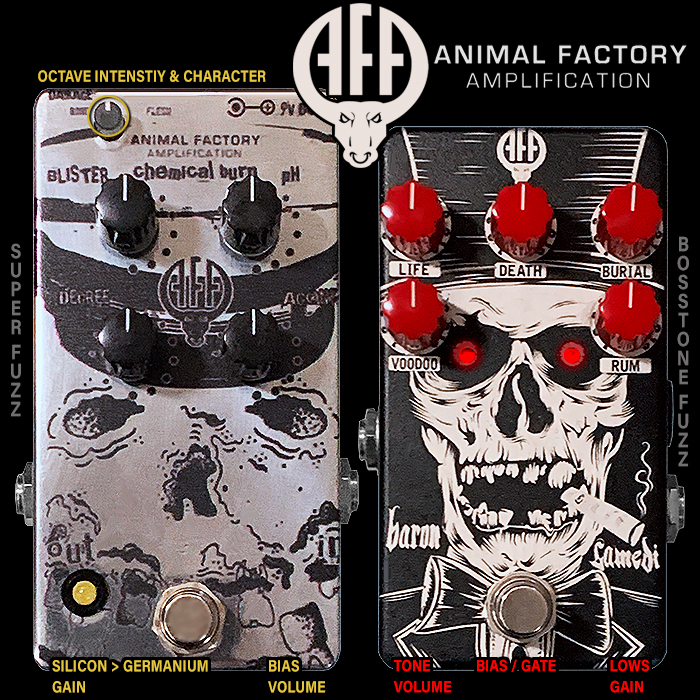An Overview of Sitek Guitar Electronics, an Artisan Family-run Pedal Boutique Inspired by Euphonious Muses
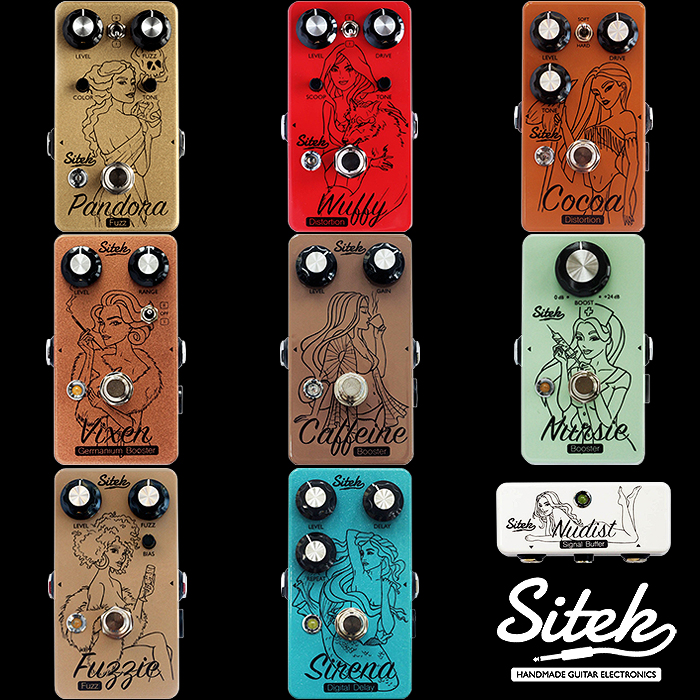
My own story with Sitek pedals can be traced back to a fortuitous YouTube demo by Joss Allen (April this year) of the then pretty brand spanking new Pandora Fuzz. Everyone knows I’m a huge fuzz fan by now - and I really liked what I heard and what I saw - pretty much within the first couple of minutes of playback - I was straight onto Reverb.com where Sitek has a store - and the pedal was with me within a matter of days. The Pandora being Andrzej ’Andy’ Sitek’s evolved take on the sort of Shin-ei / Univox FY-6 Super-Fuzz style circuit - with a significantly refined control stage and consisting of 4 knobs, 2 regular, 2 small - Level | Fuzz | Color | Tone, as well as a 2-way Symmetrical / Asymmetrical clipping toggle-switch. I noted that the graphic design seemed slightly reminiscent of a vaguely similar style by a New Zealand boutique builder - yet it looked suitably distinct to me - particularly within the wider context and mythology of the full Sitek pedal range - but more of that later. I noted Sitek to be a target of interest and included the brand in my ’Best of Polish Pedal Builders’ roundup - with a mind to doing a more thorough investigation later in the year.
So my second encounter with Sitek was another pedal demo in August of this year by everyone’s favourite Dane - Andertons’ Pete Honoré. Unlike say RJ Ronquillo who is pretty consistent for me on the demo-side - not all of Pete’s demos hit the gold standard, albeit a lot more do so of late. For the newly released Wuffy Distortion - heir to the Big Wuffy original, Pete really knocked it out of the park for me. Right from the start I was loving the tones Pete was getting out of the pedal - pretty much right across the dials - a lovely fuzz-edged sort of Marshally-drive / distortion - in fact I included the Big Wuffy in my ’Red Means Marshall’ feature as I found the core tonality to be somewhat Marshall-eque - with suitably chewy mids, but also a lovely fuzzy edge throughout the range. You all know how much I love Fuzzy-Drive pedals, and this now suitably monikered Fuzzy-Distortion is a perfect sort of Plexi/Fuzz hybrid that I was secretly subconsciously looking for but did not know existed! Funnily enough other commenters on Pete’s demo criticise the pedal for sounding too fuzzy - where it’s that character and texture that really makes this pedal for me - and makes this the first of the Sitek pedals to become a permanent fixture in my pedal-chain.
Once I had the second Sitek pedal - I knew I really needed to follow up with a more thorough investigation - the results of which yielded two further Sitek pedals for my collection - the Cocoa Distortion and Vixen Germanium Booster. There are currently a further 5 pedals to the range - the Nursie Transparent Booster, Caffeine Pre-Amp Booster, Fuzzie Germanium Fuzz, Sirena Digital Delay and sort of odd-one-out - mini Nudist Signal Buffer - all of which I will detail further in the below range rundown.
Origin of the Species
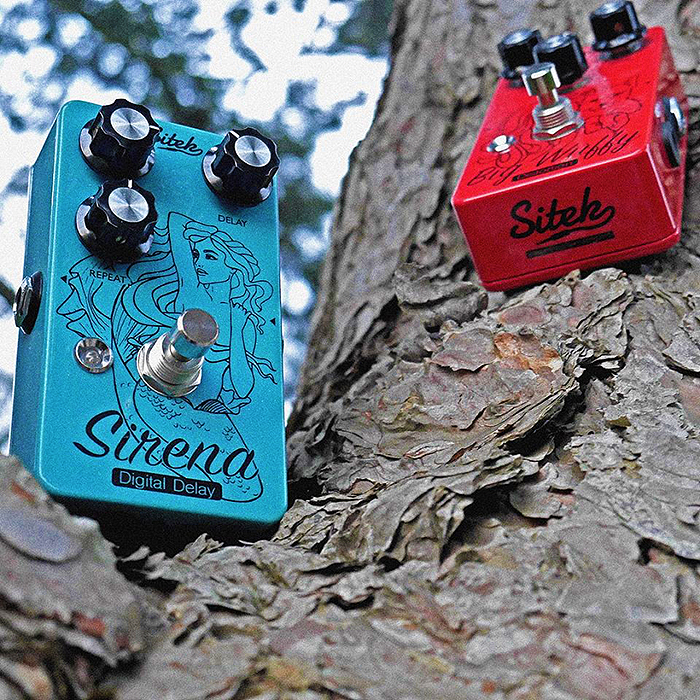
Andy's first forays into circuit designs and pedals came all the way back in 2005 when he was studying Sound and Vision Engineering at Gdansk University - as part of the Electronic and Software Engineering course module it made sense to begin experimenting with effects pedals and thus the passion was ignited fairly early on.
Initial pedal experiments were fairly few and far between early on, but by the Autumn of 2016, Andy felt suitably involved, and was inspired to kickstart what very quickly became Sitek Guitar Electronics - with a view to building all manner of guitar gear - including amps and cables and not just pedals - although they would of course be the early focus. Andy's partner and now Wife Hania was with him from the start, and the company is very much a collaboration between the two of them - where Andy largely looks after the circuit-design / electronics and manufacturing aspects in the main, while artist Hania is largely responsible for the look, feel, graphics and informatics of each pedal.

Each pedal starts on the drawing board as a sound signature idea typically coaxed out of Andy's imagination (imagineering) - to which Andy and Hania build up a character profile in the form of an inspirational Sonic, or Euphonic / Euphonious Muse as I like to call the female figureheads which underscore the Sitek currency and values. Each Muse is largely extrapolated from mythology and lore to encapsulate and express the sound she represents. Right from the beginning that concept was in place, and is distinct from other vaguely similar looking female outline figures - where each one of these Sitek Muses has a particular unique narrative, symbolism and sound-signature behind it.
The very first Sitek pedal was an early version of the actually fairly little changed Sirena Digital Delay - a Digital circuit voiced to bring forth that warm analog-style character which underscores but does not interfere with or distort the original dry/ through signal. Almost at the same time, Andy and Hania were also working on the forerunner to my favourite Sitek pedal - the earlier 3-knob Big Wuffy Distortion.
Note that for a period Sitek Guitar Electronics was operational in Cork, Ireland, before relocating back to Gdynia in Poland - so many of the earlier pedals will be attributed to Ireland.
Extraordinary Attention to Detail
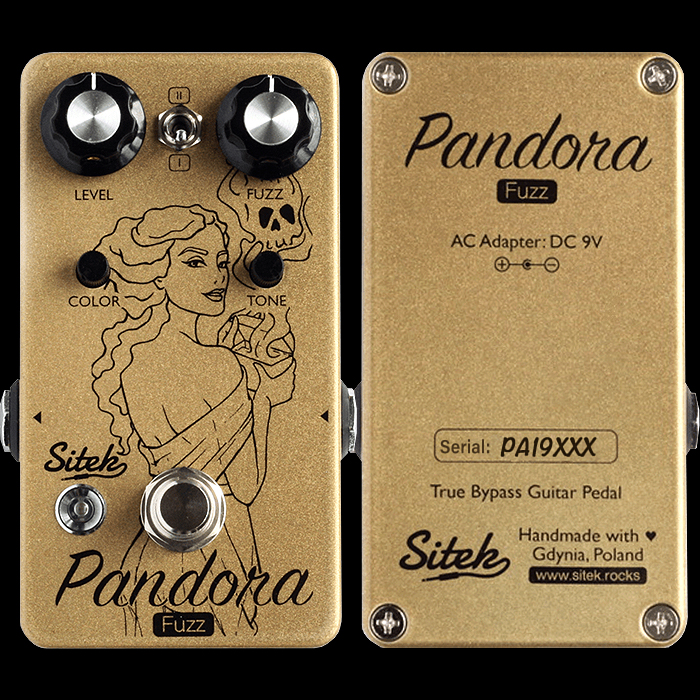
Those with an eye for detail and knowledge of product design will very quickly pick out the thoroughness of the production process for each of these pedals - where there are lots of elegant detail touches that really distinctly serve to bring out the best from this format.
The artwork itself is very much designed with due deference to the control topology - where the illustration needs to navigate around knob and switch placements. The colour of LED and its chrome surround, and the DM-1100 series / Boss-style knobs match the visual / graphic outline style of the pedal and tone with an equally carefully selected body colour for each pedal.
Several of these pedals contain further details and instructions on the base of the pedal - which includes a hand scribed serial number. The only thing really missing here is a reference to the current draw of the pedal! Some players have a thing for top-mounted jacks too, but I'm not too fussed about that really - yes it is my preference, but I've never not bought a pedal because it did not have top-mounted jacks!
I see way too many pedals where the knob style / choice and surface details have been arrived at fairly arbitrarily and lack the clear lines of applied design consistency that you very much take notice of here. Apart from a desire for current draw numbers, my only other quibble would be a couple of the names here - where I'm not entirely convinced by the provenance of 'Nudist' for instance within that naming convention. Otherwise conceptually, this holds together really well and the range provides an appealing family portrait.
I've pictured my favourite looking pedal above - the Pandora Fuzz, which also happens to be the most suitable for T-shirts and universal merchandising appeal. And I've encouraged Andy and Hania to consider that aspect of their graphics when they originate their next designs. I would offer that advice to most builders really in that if you are designing graphics - keep one eye on the merchandising opportunities with a view that said design works on T-shirts and has sufficiently universal appeal to be successful in that format. I for one am not overly keen on Logo Tees - I prefer more abstract graphic designs - but I would not mind in the slightest wearing a well-cut black T-shirt with a derivation of the Pandora design on it for instance.
The Range Roundup

As I mentioned in the intro - there are 9 pedals to the current range - consisting of 3 Boosters, 2 Distortions, 2 Fuzzes, a Digital Delay and a Mini Buffer. I will break out into more individual detail below, but the Boosters are essentially Nursie (Clean), Caffeine (PreAmp) and Vixen (Germanium). Then you have the Wuffy (Fuzzy-Distortion) and Cocoa (Dense, Dark Distortion), Pandora (Super-Fuzz), and Fuzzie (Fuzz-Face-ish Germanium Fuzz). And finally the warm analog-sounding Sirena Digital Delay, and the Nudist Mini Buffer.
I believe I have acquired the 4 best from the range - obviously opinions will vary based on preferences, but my choices do tend to match up with the best-sellers - where the Vixen is the all-time top seller, followed by recent successes with the Pandora and Wuffy. Of my 4 - the Wuffy is kind of my run-away favourite here as I will endeavour to explain below, followed up by the Pandora and Vixen in order of preference - with the slightly denser, darker sounding Cocoa brining up the rear for me - again I will explain the details of my preferences and deliberations below.
Generally the pedals are pretty much described as you would expect them to be, all bar the Cocoa - which I believe would be best described as a somewhat dense / compressed Dark Distortion. I would not personally use the word 'Overdrive' necessarily as I associate that with more softer open clippings - while the Cocoa is pretty consistently dense and dark and ramps up very quickly into crunch and distortion territory - with relatively little of the Drive taper reserved for the lower gain register. I also quite like open and sparkly mids - and love the chewiness of a Marshall-tinged pedal - where that is absent from the Cocoa. You to get rich harmonic textures higher up the gain range - but they are distinct from a more elastic feel and open textured character as displayed by the Wuffy, Pandora and Vixen.
I have visually arranged the pedals in logical associated groupings - also with a view to not place too similar colours right next to each other - so you have a first left-hand column of fuzz-oriented pedals, a top row of distortions really, and a middle row of all 3 Boosters - it made the most sense to me when I was figuring out how best to lay them out.
Here follow more in-depth details of each - starting from top-left of the above image :
Pandora Fuzz (Super-Fuzz Style) - €150
The Pandora is a really cleverly calibrated / evolved Super-Fuzz -derived circuit with a smarter, more predictable control topology. The pedal has 5 controls as follows:
- Level - Output Volume
- Clipping - [I] Symmetrical; [II] Asymmetrical
- Fuzz - The Degree of Distortion and Saturation
- Color - Controls the character of the distortion - CCW for more compression and saturation, CW for more openness and dynamics
- Tone - Typical EQ control - turn CW for more high end, dial back for more mids/lows.
This was my first Sitek pedal and still gets regularly in on the pedal-chain rotation even though I have a number of world-class Super-Fuzz style pedals. As demonstrated by both Joss Allen and RJ Ronquillo above - this pedal has a huge degree of versatility and variety, if I was to change anything it would be to add in a bass-boost toggle-switch just to be able to drop in a little more low-end on occasion as some of the setting make this pedal sound fairly thin / focused and strident - yet with lots of texture throughout.
This pedal really does not need any improvements - you can administer further control via your guitar knobs and pickup selections and it responds really well to those adjustments. This is my second favourite of all the Sitek Pedals. I mostly prefer operating in Asymmetrical clipping mode and typically I have the Fuzz dialled back a little - while I find all kinds of sweet-spots really right along the range of each dial.
Wuffy Fuzzy-Distortion (Unique fuzz-tinged circuit, but with hints of Marshall) - €150
This is my absolute favourite still of the Sitek range, it's the second one I acquired and it went straight into my pedal-chain, funnily enough into the usual 'Plexi' slot where it now remains - I run this pedal mostly on relatively low gain around 7 / 8 o'c, with Scoop at 12 o'c and Tone at 3 o'c - and Clipping set Off / [I]. Then on occasion I like to open up the throttle and drive up some of those higher gain distortion artefacts. This pedal has a lovely fuzzy timbre to it - married to a sort of lovely mid-rangey Marshall-esque distortion - it sounds wonderful to me right across the dials - pretty much per Pete Honoré's excellent demo above. The 5 controls are:
- Level - Output Volume
- Clipping - [I] Open/No Clipping; [II] Clipping Diodes Engaged
- Drive - The Degree of Distortion and Sustain
- Scoop - Degree of Mid Scoop - CW for more Scoop, CCW for more boosted / fatter mids
- Tone - More low end CCW and more high end CW
There really is nothing wrong with this pedal - but I would quite like to see a second footswitch here a la Hudson Broadcast for a 'Max Gain' option - so you can easily alternate between lower and higher gain settings. Would also be cool, but far from essential to have an additional control for Color/Thickness which alters the calibre and character of the distortion to get more versatility at the lower-gain end. Neither of those additions are really necessary though as by default this is just a perfect sounding pedal for me - and boy do I love these kinds of Fuzzy-Drive and Fuzzy-Distortion pedals!
Cocoa Distortion (Dark-edged Rich Distortion) - €135
Andy has described this pedal as an Overdrive/Distortion - and I know these words can be over-used and often misconstrued, but for me 'Overdrive' is more associated with slightly lower gain pedals, while the character of the Cocoa is more mid-gain to high gain distortion and thus more of a Drive/Distortion pedal by my measure and 12 degrees of saturation formula. The early taper of the Drive knob runs up very quickly into crunch territory by 9 o'clock really with distortion just a notch beyond that. The Soft and Hard clipping circuits have slightly different characteristics, but to my ears both are rather compressed and dense, with the softer clipping giving a smoother more rounder character generally. The 'Cocoa' moniker here is highly apt as the sound signature here is sort of metaphorically a rich dark Valrhona chocolate with that deep and long-lasting aftertaste / flavour. The Cocoa is generally quite a different frequency profile to my other 2 Sitek distortions (including the Pandora) - which are typified by more open and elastic sounding distortion harmonics. There are 4 controls at play here :
- Level - Output Volume
- Soft/Hard Switch - [Soft] for slightly smoother rounder drive/distortion; [Hard] for more harmonics and textured distortion artefacts
- Drive - CCW for cleaner / lower gain; CW for higher gain
- Tone - More low end CCW and more high end CW
When I first acquired the Cocoa I believe my expectations were slightly mis-aligned by the Soft switch on the pedal, and some of the terms used to describe the pedal's tonal character and frequency profile. This pedal is really a good 75% distortion with some smoother gain textures really quite low down on the Drive knob. The character here is definitely dark, dense and compressed, and while there is some degree of warmth when you open up the distortion - particularly on the Soft circuit, I feel that the pedal is generally characterised by a profile close to that of rich dark chocolate. I think if you come in expecting more of a rich and densely textured distortion you will be far more satisfied, but those looking for more 'Overdrive' style tones will find those somewhat lacking here. In any case most of the demos of the Cocoa I have heard are using it for its higher gain distortion register rather than the limited amount of lower gain that is available at the CCW end of the Drive dial - you just need to be aware of that. In fact in ongoing discussions, Andy and I feel this should now just be referred to as a Distortion.
Vixen Germanium Booster / Overdrive (Extended-Range RangeMaster) - €140
I have a number of high quality Germanium boosts in my collection and they tend to fall largely into 2 categories - sort of RangeMaster style full-bodied boosts, or more subtle texturising / harmonising boosts which don't much change the overall character of the other drive pedals in the chain. I have long used 'texturising' boosts in my pedal-chain - to add warmth, harmonics and dynamics to all associated upstream and downstream distortion, drive and fuzz pedals - most recently the Spaceman Mercury IV and current long-termer the ThorpyFX Hard Water Dual Boost.
Both of those I can keep on pretty much most of the time and they just add a lovely touch of richness, dynamics and extra harmonics to the chain - without really skewing the core frequency profile. I find that the Vixen is much more closely associated with a RangeMaster style - meaning it adds a little too much body as such into the chain for my needs - and where the left-hand knob ramps up both Volume and Gain - while the right hand Range dial also adds in a lot of character and low-end when dialled CW. Even at low Level and with the Range quite a lot CCW for more of a Treble Boost - I was still getting too much body-impact on my chain - meaning that I very early on decided that this would be best utilised for me as a really elegant Germanium Overdrive in my chain - and it really is a wonderfully smooth and harmonically textured Germanium Overdrive - which works well for me with the Level dialled back a touch, the Range being set a little mids and bass heavy at around 3 o'c and the clipping switch in the middle open position. I seem to get a more pleasing tone without clipping applied, position [II] is my second favourite, and clipping [I] my least favourite. In any case I mostly use this as an occasional Germanium overdrive in the Open clipping position! There are 3 controls at your disposal here:
- Level : Degree of Gain Boost and Volume
- Range : Frequency Range with more Treble-Boosting CCW and more Mid and Low-end Boosting CW
- Clipping : [I] / Off / [II] different degrees of diode clipping
So as I mentioned, I personally cannot use this pedal as a Germanium Texturiser which is my main use for Germanium Boosts nowadays (while it has to be noted others have made it work well within their rigs in such scenarios) - to get it to work for my purposes (as a Germanium Texturiser) I would probably need separate Volume and Boost knobs on the Vixen - so I could have more headroom - without boosting the gain and punching up the body density. This is of course the most popular / best-selling Sitek pedal to date so my input here is really moot in terms of statistical relevance. This is a great Treble Booster style with extended range and it works well if you want to use it for all those usual purposes - it won't do for me though what the Spaceman Mercury IV and ThorpyFX Hard Water do so well - but makes for a great Germanium Overdrive as mentioned. Of course the circuit uses top-notch high quality Russian Germanium Transistors for the tone generation.
Caffeine Pre-Amp Booster (PreAmp / Pre-Gain Booster) - €110
This is your classic pre-gain booster which automatically punches in more crunch into your tube amp or downstream drive pedals. You use this when you want to add body and distortion as well as volume to your existing gain tone - although that of course depends to a degree on how you dial it in. This pedal could not be simpler to operate really - there are just 2 knobs : Level (Volume) and Gain (Crunch/Distortion). You can use the former if you just wish to notch things up a touch, but if you want more distortion and saturation for a solo say, then the Gain needs to be dialled in CW too. This is actually the gainiest of the 3 Boosters, while it does not add in quite that same lovely harmonic texture and grit that the Vixen delivers.
I already have plenty of built-in and specialist boosts in my existing pedal-chain so I don't really need this largely classic solo saturation type of boost. This has a lovely rich saturating tonality to it - while there are other players who prefer using Tube Screamers or TrebleBoosters (Vixen) to ramp up their drives to the next level. There's nothing wrong with this boost - it's a great sounding one of its type, I just don't have any specific need for it for my own purposes. Note that like the Vixen Germanium Booster - the Caffein can also be used as an overdrive if you crank the Gain high enough - you get a lovely relatively smooth character sort of mid-gain overdrive if you dime it. I would imagine most though would use this pedal in a more traditional booster manner.
Nursie Transparent Boost (Clean / Volume Boost) - €110
This is your typical clean or high-headroom boost which is particularly useful for sorting out volume issues on your pedalboard where say one of your drives or fuzzes has too low an output profile. The Nursie will bring the under-powered pedals back up to unity without adding in saturation or body - you will just get the same signal but at a louder level.
This pedal could not be simpler - it has just a single Boost / Volume knob with a massively high headroom of +24dB. I already have other specialist pedals providing this sort of function in my own chain, so I don't specifically have a need for this particular one - but for those needing a little more 'unity' control in their signal chain - then this is definitely the droid you are looking for!
Fuzzie Germanium Fuzz (Germanium Fuzz-Face-ish) - €140
This is a beautifully tuned and calibrated Fuzz-Face style of Germanium Fuzz with the not uncommon 3 knob topology of Level, Fuzz and Bias - I have several Fuzz Faces with the same sort of setup. It uses really high quality Russian Germanium Transistors and sounds suitably warm and textured as you would expect with a quality Fuzz Face style circuit. The only slight issue here which I concur with Joss Allen's findings is that the Level Output is just a touch on the low side for my taste.
This is quite common really for Fuzz Faces and in my collection of 45 or so just of that genre type, a good 10-20% don't really have sufficient output volume for me (as is the way with those original vintage style circuits) - they all really could do with more headroom. This is largely just the nature of those Germanium Transistors where the beautiful tone and harmonics happens as a by-product of voltage leakage. I typically, but not always prefer the slightly more modern takes on the circuit where the builder has tweaked the components to produce a more usable level of output. I probably have too many pedals in my collection which could do with just a touch more level on volume, gain or saturation.
Updating this circuit is no easy task necessarily as it can significantly impact on the tonality and dial-back-ability of the classic Germanium circuit - yet there are several circuits out there which do this very well and several of those are already in my collection. I don't really need yet another Fuzz Face style pedal, but if Andy ramped up the output on this one, I would very likely give it a very healthy consideration! (... before then adding to the collection!)
Sirena Digital Delay (Warm Analog-Voiced Delay) - €170
As previously mentioned, this was pretty much the first official Sitek pedal - which Andy describes as 'a Digital Delay with 100% analog signal path (digital chip is just a medium to produce the repeats). This sea beauty has warm, analog sound and provides a delay time of up to around 900ms'. This is about as simple as Delay pedals can be with just 3 highly intuitive and obvious knobs - Level, Delay and Repeat; 'Delay' being the Delay Time and ranging from 25ms to 900ms.
Mine is a stereo rig, and I really need my delays to be similarly stereo output - so the Sirena would not typically be the sort of effect I personally gravitate towards, I currently have 2 delays in my pedal-chain - the Strymon Volante Magnetic Echo being my main delay, with support from the Boss DD-200 for different flavours of delay - actually I also use my in-chain Eventide H9 Max partly for some of its delays too - so I'm pretty well covered in that regard. I occasionally switch the Boss DD-200 our for more glitchy Granular Delays and/or Granular Synthesis effects too which sees the Red Panda Particle V2 in particular - in the rotation quite a bit.
As an elegant always-on sort of delay the Sirena is nigh on perfect - and it's designed to not really interfere with the main dry-signal but just lend further texture and ambience to the playing which it does beautifully elegantly per Ariel Posen's demo above. This would be the perfect first / simple delay for most players.
Nudist Signal Buffer - €65
There's not too much additional to be said about the Nudist Signal Buffer beyond its online description - it's obviously designed to preserve signal strength and signal detail where you are using a lot of pedals or significant lengths of cable - both guitar cable and patch cables. Both of those will result in loss of volume, frequency definition, and high frequencies in particular. I have a number of smart pedals in my own chain - near the two ends to the signal chain - which naturally boost and buffer the core signal - I also use an EQ pedal after my drive section to help restore any high frequencies which may have been cut out or lost in transition through my 41-long-pedal-chain.
For those who don't have smart Buffer/Booster/EQ pedals, then the Nudist is the perfect signal fixer to help maintain and restore signal fidelity. As always, Andy uses top notch components here - so unlike a number of buffers - you get all the benefits without any audible coloration to the core tone. All in all a very decent and very reasonably priced well-formatted mini-buffer.
Final Thoughts and Recommendations
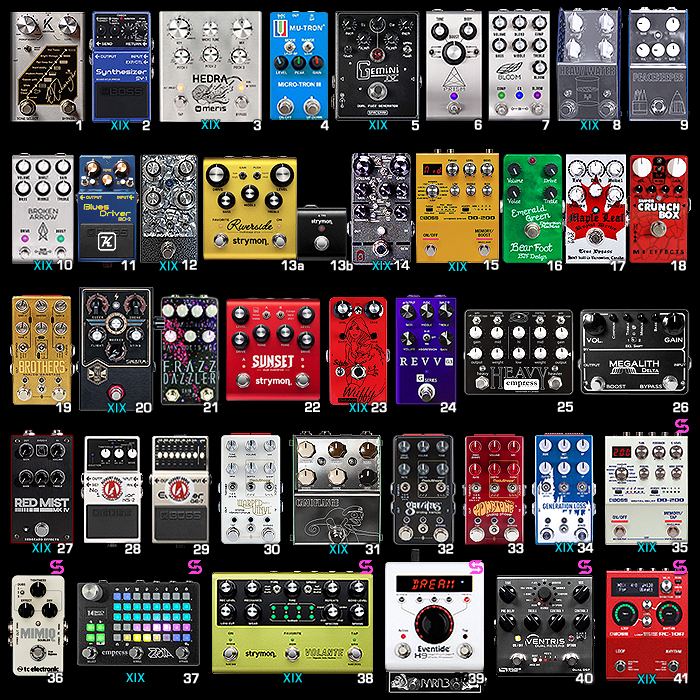
Whenever I come across a new brand, I don't necessarily do proper due diligence right at the start - I tend to do a pretty quick sweep-through / scan of the range and often just check out one or two things I sort of like the look of. At other times I'm too easily distracted by ongoing priorities so I don't always make it back to the source quickly enough to do further checks and inspection and on occasion the momentum or memory of it will be lost.
As regards Andy and Hania and Sitek, there were obviously 2 sort of serendipitous events which triggered my acquisition of the Pandora and then Wuffy originally - and that was sufficient to sustain a broader interest in the whole range - which further yielded the Cocoa Distortion and Vixen Germanium Boost for my collection. It is important to emphasize that in the main these are entirely original circuits of Andy's own imagining and engineering (imagineering) - he does a lot of prototyping with different select components - OpAmps etc. and goes where his imagination and experiments lead him - which is why a lot of these pedals have fairly opaque descriptions on the Sitek site as they're not really based on existing benchmarks and thus tricky to describe from that perspective.
I however will always try-to ball-park things so I know exactly what sort of thing I'm dealing with and where it would fit in within my own 41 unit pedal-chain (as per above visual for End of Year 2019). I really need to know the character and style of a pedal I'm dealing with to be able to accurately gauge its suitability for my own needs. A number of pedal builder sites shy away from ball-parking their pedals which often makes it difficult for players to connect with those pedals - as they might not be sure exactly how they fit in with their own rig. And most players I know gravitate towards certain typical tone families - and are therefore typically looking for pedals within those ballparks - furthermore they know how to gauge and appreciate pedals within those defined family groups - while distinctly different pedals usually make for a more difficult audition and conversion process.
What attracted me to Sitek was a combination of the looks - the attention to detail and high consistency - much like with fuzz-specialist Expresso FX - consistency of detail, design and production is almost always a mark of high quality - and it certainly is for Sitek here. So the look of something helps draw you in, but its the sound of that device which seals the deal - and in each case I've been drawn in by a particular sound signature, discernible timbre or characteristic which won me over.
The Wuffy Distortion description did not necessarily make that much sense to me right at the start - but Pete Honoré's demo certainly did. This is important for all pedal-builders to understand - as the right sort of demo will usually make a big impact on whether it makes or breaks a particular pedal.
I usually do the exercise of correlating and collating my particular order of preferences - and I find it really easy to do that here - so in that vein - if I could only have one of these Sitek Pedals - it would undoubtedly be the Wuffy (now settled firmly at slot #23 in my chain per above visual), if two I would add the Pandora, for three - the Vixen would be my third choice - with the Cocoa Distortion as my fourth - once I understood exactly what ballpark each one operated within. For now the Wuffy is a mainstay, and I use the Pandora and Vixen quite a lot on the rotation of slot #14 - which tends to be my most rotated slot currently - with the Cocoa Distortion also getting an occasional airing on that slot.
Andy has a mind to bring through some new modulation pedals in 2020 probably starting with a phaser, and while he still has plans for one or two more gain pedals, he will also be refining and tweaking some of his existing already stellar pedals - some with input from me, and from his roster of artists, other testers and demo guys. I have a feeling that an updated Fuzzie is relatively imminent with improved headroom level - and I will certainly seriously consider adding that to my collection. As reiterated several times above, these are particularly well-considered and well-made effects pedals - in fact hand-made artisan pedals with an exceptional attention to detail - that most players should be more than delighted with - and at these prices these pedals are really very reasonable. You have a choice of where to acquire them from as they are available currently both on the Sitek Site, and from the Sitek Reverb Store.







